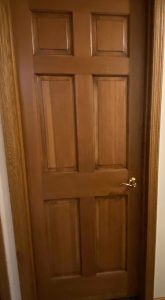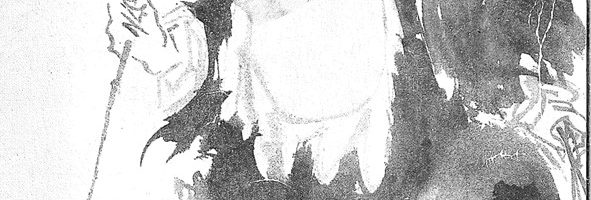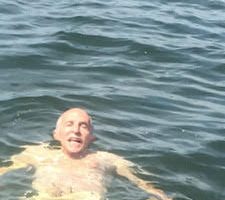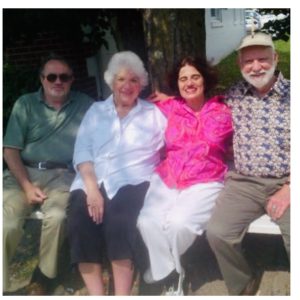In the 1950s high school swimming was neither competitive nor popular. For the macho man, the game was gymnastics on the bars, football on the field, and baseball on the diamonds. For women, it was cheerleading and theater.
We did not have fancy or colorful uniforms.
Swimmers had a minimal audience. Our uniforms scantily revealed too much of our bodies: Just bare legs with female swimsuits and men in speedos.
The frequent practice of swimming the breaststroke taught me to swim without rising up and down in the water which would make waves. As a father, I was able to show off my skill by perching my daughter on her knees on my back while I swam in the pool. A few times when she was able to balance better, she stood up. For me, this feat was better than winning a race.
For eight years, I had a swimming routine at the university where I was a professor. My office was across the street from the pool, a distance of about 100 yards. So I could dash between classes or office hours for a thirty-minute half-mile swim. This was a weekly event, or more.
My effort was to swim as flat as possible with as much speed as possible, I kicked my legs with a small splash to remind me that my feet were not sinking deep in the water raising the level of my head. And I also did not want them wagging in the air which would not propel me forward in the pool.
I calculated that covering the twenty-five-yard lap would require 14 strokes with one arm or 24 strokes with both. Additionally, I needed to prevent my arms from diving deep into the water because that would just raise my body and prevent forward motion. Rather I should have my arms sweep across my chest and stomach
After swimming many laps, I developed muscle memory to the extent that I no longer counted my strokes or checked the splashing for my feet. Sometimes, during the thirty-minute swim, I would shut my eyes falling into a coma-like state thinking of my classes, research, family, and life. I would not be aware of my distance from the edge of the pool. Consequently, my hand would alert me of the boundary by hitting the edge of the pool. Or I would stop short of the lap’s completion by stopping to breathe on the 22nd stroke. Occasionally I banged my head into the pool wall. When I did this in the shallow end, I would sink to my knees and swear to myself about my stupidity, but in the deep water, I would be suddenly forced to find the surface with some desperation.
My compulsive swimming habit also led to a precarious social and occupational threat.
 I spent a sabbatical spring semester plus a summer off the campus. When I returned to my routine, I quickly dashed off to the pool for my 30-minute swim. I dashed into the locker room to change and shower. I had left my towel and speedo in my own locker for nine months. I ran down the stairs to the pool. Dashing into the locker room to change and shower. Entering the aisle with great expectations of a long-delayed swim I noticed swimmers preparing for their plunge. One was sitting on the bench looking away from me. I looked at this body with some curiosity. It did not look like a male there were no big shoulders, no tightly skinned muscular back, and just a small waist. The feet were very small, and the toenails were colored. The silence was broken when the person shouted to a friend who was around the corner. The noise was feminine, the sound of singing.
I spent a sabbatical spring semester plus a summer off the campus. When I returned to my routine, I quickly dashed off to the pool for my 30-minute swim. I dashed into the locker room to change and shower. I had left my towel and speedo in my own locker for nine months. I ran down the stairs to the pool. Dashing into the locker room to change and shower. Entering the aisle with great expectations of a long-delayed swim I noticed swimmers preparing for their plunge. One was sitting on the bench looking away from me. I looked at this body with some curiosity. It did not look like a male there were no big shoulders, no tightly skinned muscular back, and just a small waist. The feet were very small, and the toenails were colored. The silence was broken when the person shouted to a friend who was around the corner. The noise was feminine, the sound of singing.
I realized I had sped into the wrong locker room. I ran upstairs to the secretary’s office yelling, “Why were there women in the men’s locker room”
She replied calmly. “During the time you were gone, the locker rooms had been switched. The reason was that the women felt that the outside windows had allowed men to look at them during their changing clothes and showering.”
I asked. “Why did you not label the changes at the door?”
She answered with some amusement.
“We announced the change to the coaches and the swimmers. We have not yet had time to post signage on the doors “
I left. I did not ask her to go down and get my Speedo and towel. I never retrieved them or picked up my lock.








